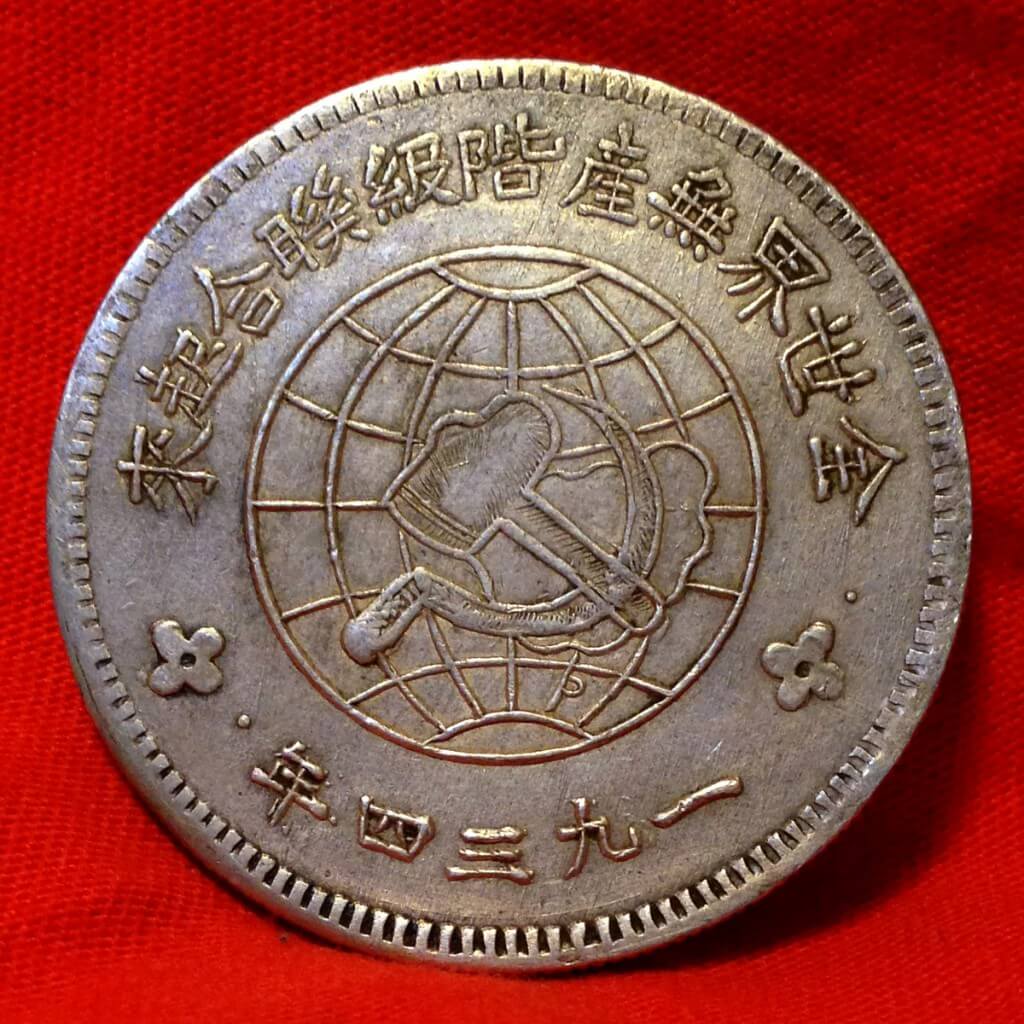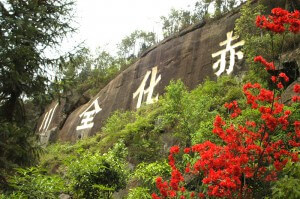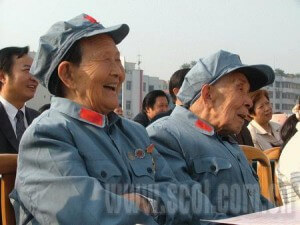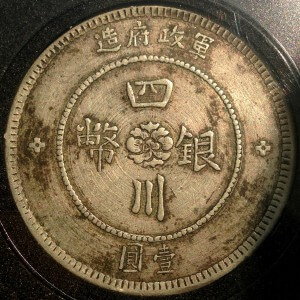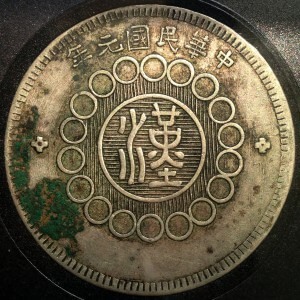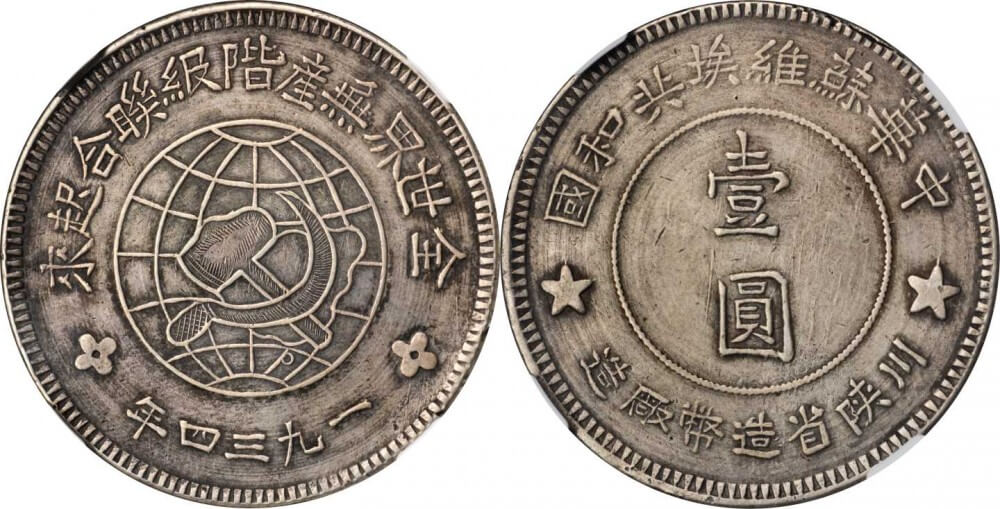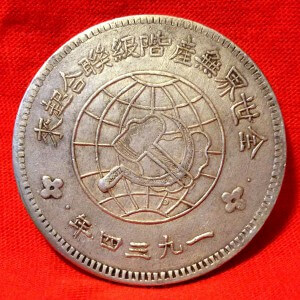In Winter 1932 the Fourth Front Army of the Chinese Workers’ and Peasants’ Red Army, mostly composed of survivors of the Nanchang Uprising and armed peasants from the Hunan province, escaped Chiang Kai-Shek’s siege of the Hupeh/Honan/Anhwei revolutionary base and entered northern Sichuan across Mt. Bashan. By early 1933, the Red Army controlled a 15,000 square kilometers area centered around the cities of Bazhong, Guangyuan and Nanchong, populated by over one million souls.
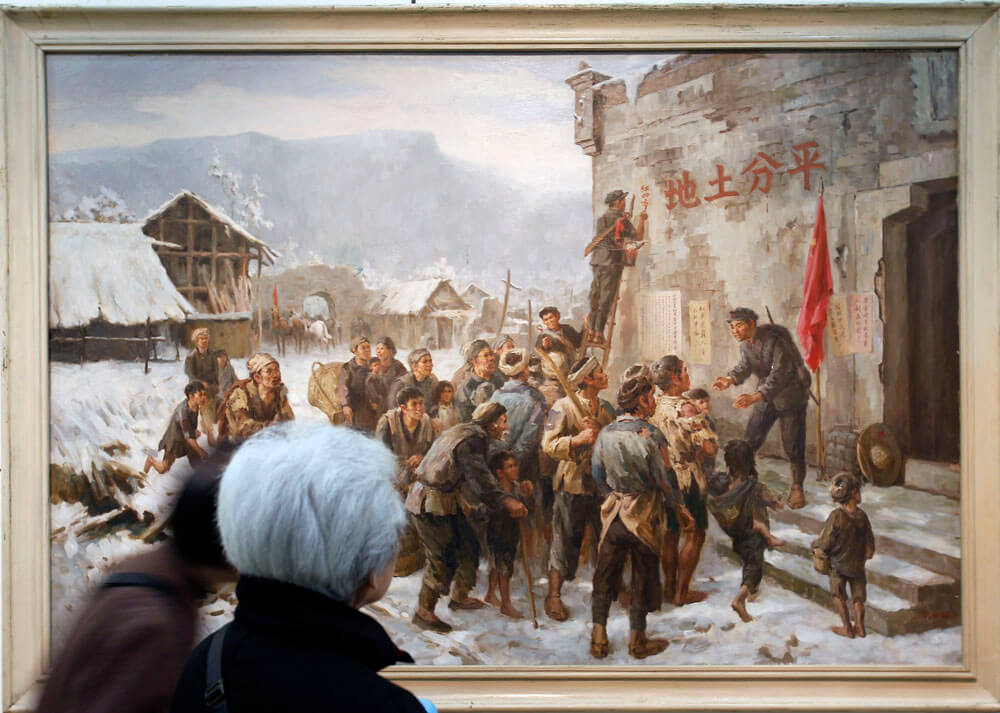
A 92-year-old woman looks at “The Red Army enters Northern Sichuan”, a 1957 painting from LIU Guoshu
Eighty years later, I was sipping tea in Nanchong while listening to my friend YI Chuanbi – his pet iguana perched on his shoulder – telling me of an old man he knew who had a perfectly preserved Szechuan-Shensi Soviet dollar and (for the right price) would be amenable to sell. Chinese soviet dollars are the thing of legend: their rarity and historical significance caused them to be highly sought after by collectors very early on. A Chinese Soviet dollar in uncirculated condition was already worth 1,000 yuan in the early 1980s, when YI was selling Szechuan dragon dollars 8 yuan apiece to buy games for his video game arcade business. Since then those prices have risen 20,000%, a performance comparable to AAPL shares during the same period!
Soviet dollars are in a class apart from other Chinese coins: they are revolutionary relics, just like the stone-carved slogans that the Fourth Army left in the Szechuan province. For many older Sichuan men and women, they are a direct connection to the heady days of their youth.
The Szechuan-Shensi Soviet dollar was struck in 1934 with hand-crafted dies at the Red Army Mint built in the Wangcang county (旺苍县) of Guangyuan (广元市), and were as much an instrument of propaganda as an instrument of payment. That politically charged currency, stamped with the symbol of the hammer and sickle spreading all over China and surrounded by the famous rallying cry “proletariats of the world, unite!“, was obviously banned and very dangerous to own in the territories controlled by the KMT or the Sichuan clique. For use in enemy territory, the Red Army Mint issued counterfeit Szechuan Military Government dollars instead. These fake coins, made with great care but with the same crude techniques used to produce the Soviet dollars, are easily identified by their hand-carved security edge and the concentric grooves on their surfaces.
(the Red Army version of the Szechuan 1912 Military dollar is worth $3,000 to $5,000 USD in XF condition)
Most of these Red Szechuan Military dollars and Soviet coins were melted down into less dangerous shapes after the Fourth Army retreated in March 1935 to join the Long March and the nationalist forces regained control of the area. The few remaining coins were often kept hidden, either due to the risk they posed to their owners, or out of the old-fashioned concern that the fewer people know of your valuable possessions, the better!
This combination of high desirability and elusiveness created ideal conditions for modern counterfeiters. Until smartphones with good camera became ubiquitous in China, very few collectors had access to anything better than low resolution pictures of genuine Soviet dollars, and even fewer had the opportunity to examine one “hands-on”.
Even for collectors with deep pockets, it is therefore difficult to find a Soviet dollar both in excellent condition and with a respectable pedigree, made crucial by the large number of very high quality fake coins circulating on the market. You can now better imagine my excitation when YI Chuanbi first told me of this opportunity!
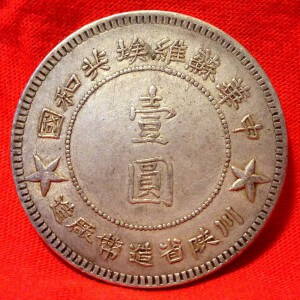
Szechuan-Shensi Soviet 1934 dollar (Kann 808 – Y-513 – L&M 891) (reverse) (graded AU55 by NGC)
In the end I did not succeed in buying that old man’s Soviet dollar in 2012, but after three years I finally managed to catch another one, pictured above. This Szechuan-Shensi Soviet dollar was circulated but is exceptionally well-preserved, with softly lustrous surfaces. More importantly, it has an unimpeachable pedigree: it is the plate coin for the “Crab pincer” variety (CSSB-Y2-4-02) in 《川陕革命根据地货币图录》, one of the most detailed books on the money of communist China.
It is a strange feeling to look at this heavy coin in the palm of my hand and think of the courageous men and women who carefully engraved dies and minted coins eighty years ago, doing their best despite the hardships and terrible conditions, with the hope of somehow contributing to change the world. Chinese Soviet dollars are truly a class apart.
